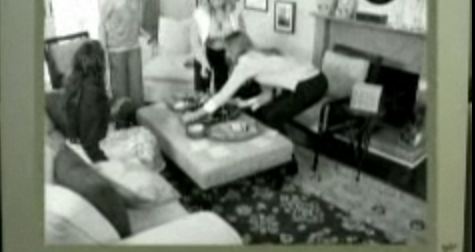Often, the most socio-economically disadvantaged individuals of a group are used as a wide brush to paint a picture of an entire minority race or ethnicity. Common examples include stereotyping all Black men as members of the inner-city underclass or as uneducated, unemployed, urban criminals, or all African-American women as “welfare queens.” In the current cultural and political discourse, Hispanics are often prejudicially construed as murderous drug-smugglers or as destitute immigrants who illegally cross the border to “drop babies” and exploit U.S. social programs. As Eduardo Bonilla-Silva has argued, these prejudices then disadvantage minorities of all social classes who are stereotyped and experience discrimination regardless of their individual socio-economic status or accomplishments.
However, focusing on the marginal members during the social construction of an entire racial group does not usually occur with Whites. The existence of poor Whites is often ignored as Caucasians are stereotyped as upper-class—which usually entails assumptions that they are hardworking, highly-moral, successful exemplars of American individualism, as Kirby Moss explains in The Color of Class. “The Whitest People,” a skit from Carlos Mencia (a controversial comedian who built his career drawing upon his Hispanic background to explore race in America), illustrates the connections between whiteness and heightened class status (sorry about the ad):
Mencia’s construction of whiteness critiques the excesses and frivolousness of the upper-middle class lifestyle often conflated with whiteness. While Mencia pokes fun at this lifestyle, outside comedy these same stereotypes mean Caucasians are usually viewed positively as many presume the upper class can only be reached through hard work and strong morals. Whereas minorities are often presumed poor and thus viewed with suspicion, whites are often prejudged favorably. For instance, Mencia himself mentions that because people are viewed through prejudicial lenses, when whites drink alcohol they are thought “sophisticated” but when Blacks drink they are accused of being “drunks.” These differential prejudgments based on race are the basis of white privilege that replicates and reinforces both class, and racial stratification.
The open expression of Latino stereotypes and slurs in this video also highlights why Mencia’s comedy is controversial. Detractors claim he engages in a process symbolic interactionists call trading power for patronage (see Schwalbe et al. 2000). This process occurs when an individual embodies a marginal identity in order to receive personal benefits that come at the expense of the larger group. For example, while Mencia’s comedy career benefits from the self-deprecating humor in this video about low wage employment, family violence, and food insecurity his jokes might also reinforce negative stereotypes about Hispanics.
However, Carlos Mencia’s supporters describe the open confrontation of race and racial disadvantage in his comedy as contesting stigma (Goffman) by celebrating a minority group’s ability to persevere despite their marginalization. To this group, Mencia’s frequent use of ethnic slurs to describe himself and other Latinos is an example of re-appropriation (Galinsky et al.), reclaiming a pejorative label in a way that redefines the meaning of racist slights and infuses the word with positive and empowering meanings.
—————
Jason Eastman is an Assistant Professor of Sociology at Coastal Carolina University who researches how culture and identity influence social inequalities.


Comments 15
Tusconian — August 7, 2012
More reasons Carlos Mencia (aka Ned Holness) is controversial:
1- He's not funny at all, and he plagiarizes much of his humor from more talented comedians (Dave Chappelle and George Lopez in particular) and somehow was given 4 seasons of a show that nobody liked.
2- Most of the people that DID like his show were, well, Comedy Central's target demographic: white males between 14 and 30. Contrast him and the (much more talented) Dave Chappelle. Dave Chappelle didn't really appreciate his race-specific jokes being used as basically an excuse for white people to laugh at black people or pretend they had "n-word privileges," which was a big reason he gave up the show. Carlos Mencia, instead, reveled in it. He was using a tool that should have been amusing to those it was relevant to, and eye-opening to intelligent people of different races, and instead packaged it for white teenage boys sticking around after South Park so they could go to school the next day and parrot his jokes and defend it with "but Carlos Mencia and he is Mexican."
2- He uses a lot of Mexican and Puerto Rican specific slurs despite being mostly Honduran and white. He is part Mexican, though, so I think that's a more muddled example.
Yrro Simyarin — August 7, 2012
I assure you that it is only upper-middle class white people who are considered sophisticated when they drink. The rest of us are ignorant, white beater wearing, truck-driving, gun clinging, obese, red-necked people of walmart who probably beat our wives after we've chugged a couple of cheap beers.
myblackfriendsays — August 7, 2012
#whitepeopleproblems is another really good example of the idea that white= upper middle class. white people have plenty of problems that are a lot more serious than the ones typically discussed using that hashtag.
Gregoire Delhaye — August 7, 2012
How would Dave Chappelle's humour then? He has been criticized for perpetuating stereotypes of blacks. I found his humour much more corrosive than Mancia's.
guest — August 7, 2012
People who have to work for a living are not members of the Upper Class. Anyone who works the hours and at the wages someone else assigns them are members of the Working/Lower Class. Who are members of the Middle Class? Business owners.
As to Whites, a good many of them are Trash.
Will — August 7, 2012
Sorry, this video is unavailable from your location.
Andrew S — August 8, 2012
This all reminds me of: http://first-world-problems.com/